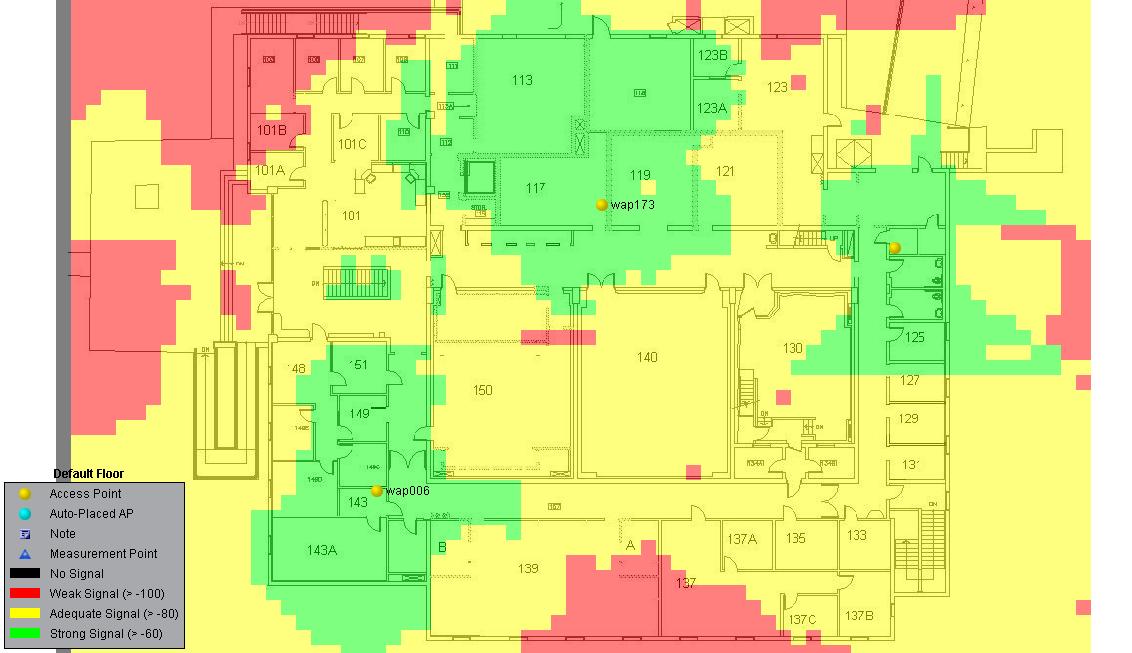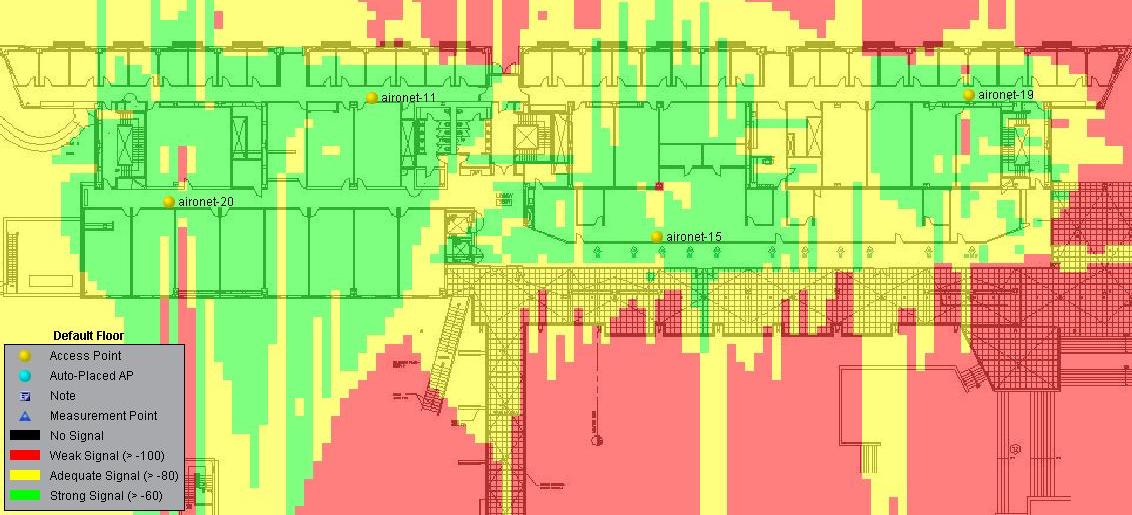|
The main floor has three wireless access points (two of them labeled)
represented as yellow spheres.
The 12 inch thick concrete walls attenuate the WiFi signal a lot but
there is some penetration. A drawing like this is commonly called
a heat map -- even though the hottest regions are represented by the
coolest color (green). This sample heat map was produced with a program
from Helium networks. The data are collected on a laptop preloaded
with a building map. The operator walks around the building and mouse
locates her position on the map at regular intervals while the program
reads signal levels continuously. That some of the room numbers are legible
while others are not is testimony to the importance of starting with
a good building plan drawing.
Not shown here, but the system measures the signal strength of all
the access points within range -- not just the ones that were
officially installed. It thus can help evaluate radio interference
problems.
These maps have considerably higher resolution than the Cruznet maps
on the web. But they are considerably more expensive to produce. No
decision has been made turn this into a production system. We are
presently evaluating the cost of producing this kind of documentation.
|

